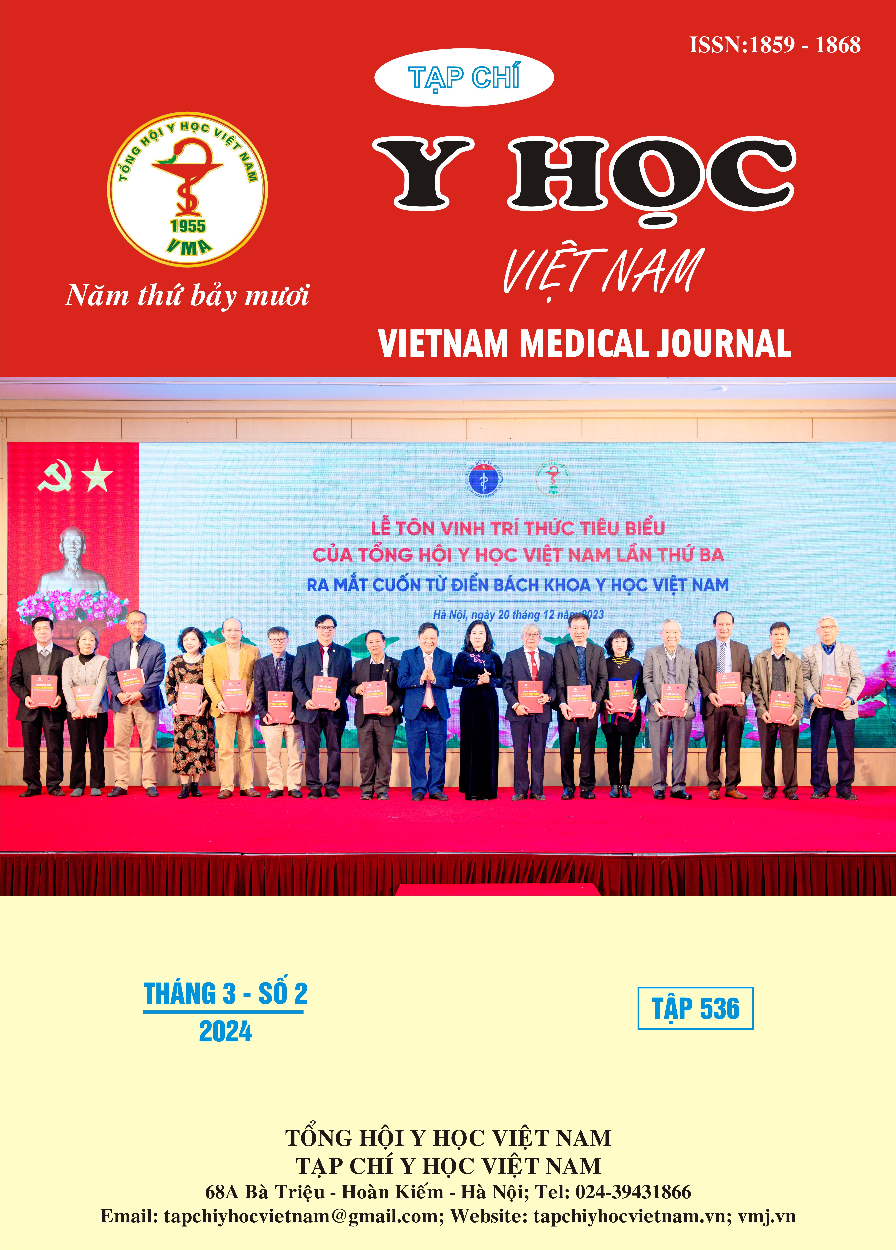FIRST APPLYING A GIS MODEL (GEOLOGICAL INFORMATION SYSTEM) TO ASSESS THE INFLUENCE OF GEOGRAPHICAL FACTORS ON THE SITUATION OF BREAST CANCER PATIENTS REGISTED IN K HOSPITAL
Main Article Content
Abstract
Objective: This study aims to describe some typical characteristics of breast cancer patients examined and treated at K Hospital, and initially apply the GIS models to assess the influence of geographical factors on breast cancer situation registered at K Hospital. Research objective: All breast cancer patients were diagnosed and treated at K Hospital in the period from 01/2018 to 01/2021 were included in the study. Methods: Retrospective study, convenience sampling. Spatial analysis techniques that have been used with the average nearest neighbor algorithm, Global Moran I index measurement, and hotspot analysis (Getis-Ord Gi), and using R software to analyze. Results: The study recorded 15,019 cancer patients visiting K Hospital for cancer treatment during the study period, of which 2,670 patients were diagnosed with breast cancer, accounting for 15.1%, and in which people living in Hanoi account for the highest percentage (608 cases, 22.8%).There is a difference in the incidence of diagnosed breast cancer in Ha Noi (22.8%) compared to other provinces (18.5%) (p<0.01). Correlation analysis results among districts in Hanoi shows that Global Moran I index achieved z-score=0.300024255 (p<0.01), and Hotspot analysis (Getis-Ord Gi) achieved Z-score=0.04038 (p-value <0.01). Conclusion: Distribution of high-risk breast cancer registered in K hospital was focused in central parts of Hanoi, especially Cau Giay, Nam Tu Liem, Bac Tu Liem, Ha Dong, Thanh Tri districts. The other districts were not significantly different from the average of Hanoi.
Article Details
References
2. Bùi Diệu, Nguyễn Thị Hoài Nga, và Trần Văn Thuấn, “Xu hướng của bệnh ung thư vú tại Việt Nam,Tạp chí Ung thư học Việt Nam,” vol. 4, pp. 34–38.
3. T. Pd, M.-T. C, and B. Pc, “Female breast cancer in Vietnam: a comparison across Asian specific regions,” Cancer Biol. Med., vol. 12, no. 3, Sep. 2015, doi: 10.7497/ j.issn.2095-3941. 2015.0034.
4. D. S. G. Eugênio, J. A. Souza, R. Chojniak, A. G. V. Bitencourt, L. Graziano, and E. F. Souza, “Breast cancer features in women under the age of 40 years,” Rev. Assoc. Medica Bras. 1992, vol. 62, no. 8, pp. 755–761, Nov. 2016, doi: 10.1590/1806-9282.62.08.755.
5. B. H. Son et al., “Young women with breast cancer in the United States and South Korea: comparison of demographics, pathology and management,” Asian Pac. J. Cancer Prev. APJCP, vol. 16, no. 6, pp. 2531–2535, 2015, doi: 10.7314/apjcp.2015.16.6.2531.
6. DeVita V.T., Lawrence T.S., và Rosenberg S.A, DeVita, Hellman, and Rosenberg’s cancer: Principles & practice of oncology., Tenth edition. 2015.
7. Gregorio D.I., Samociuk H., DeChello L. và cộng sự, “Effects of study area size on geographic characterizations of health events: Prostate cancer incidence in Southern New England, USA, 1994-1998. International Journal of Health Geographics.,” 2016.


